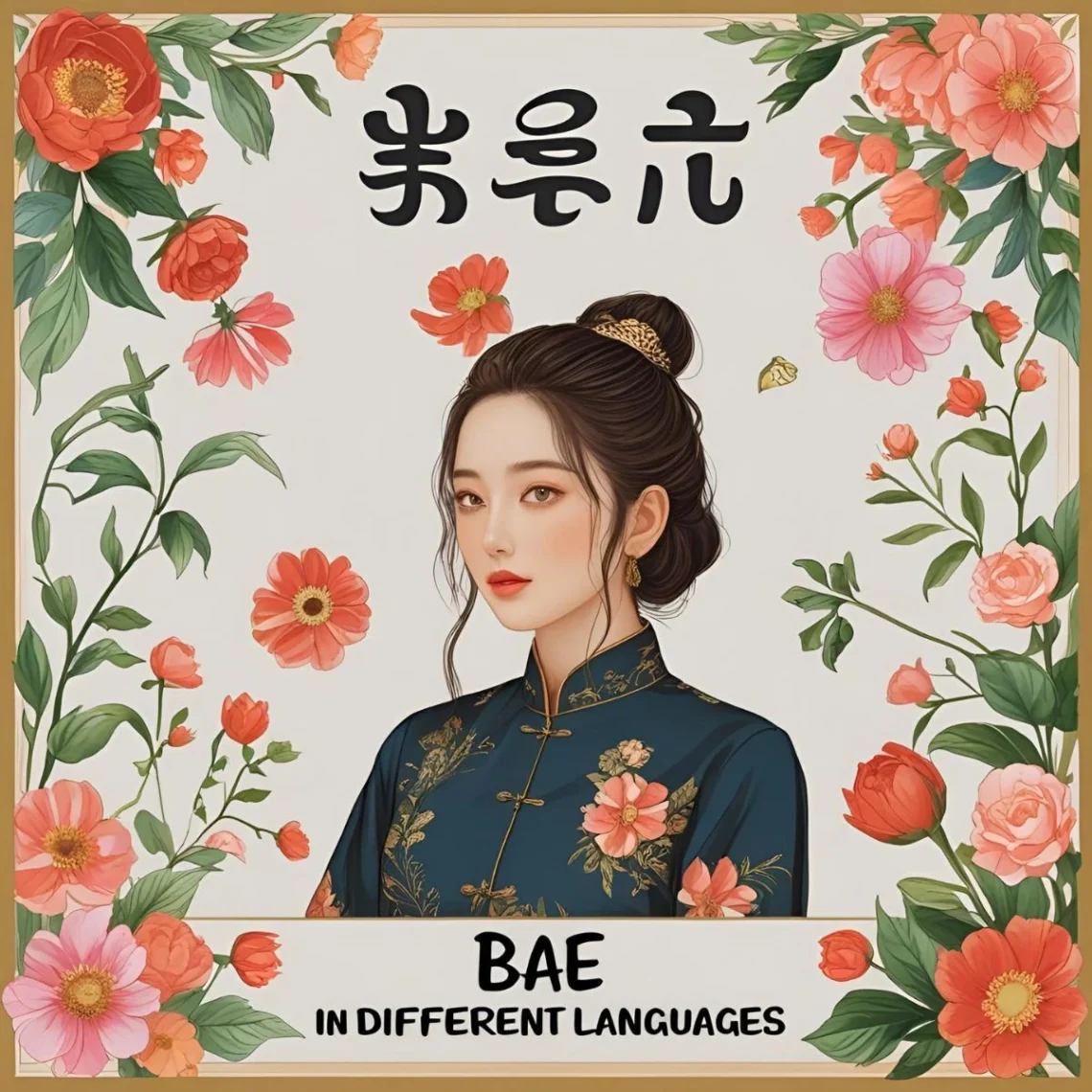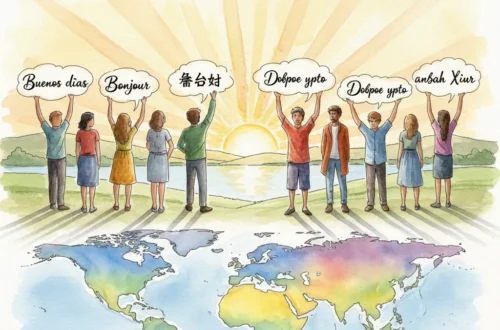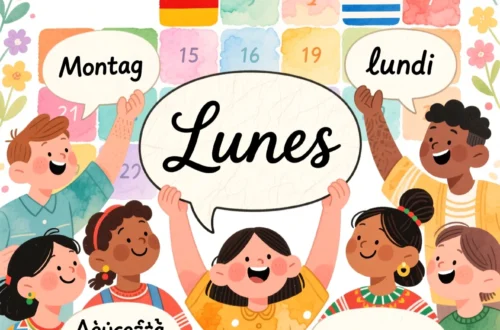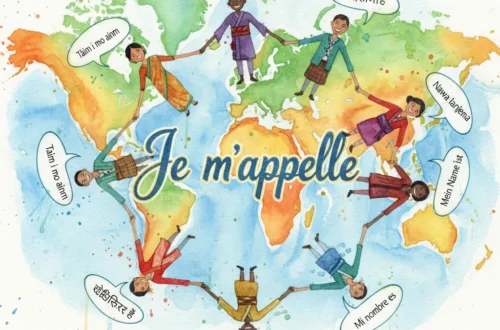The word “bae” slipped into our lexicon like a warm hug, a casual yet intimate term of endearment that’s now a global phenomenon. I remember the first time I heard it—a friend tossed it out playfully, calling their partner “bae” with a grin that radiated love.
It struck me how such a small word could carry so much warmth, transcending borders and languages. Whether whispered in a quiet moment or shouted in a bustling market, the concept of “bae”—a term for someone cherished—resonates across cultures. This blog post explores how “bae” is expressed in different languages and cultures, weaving a universal thread of love, connection, and human affection.
Reference Table: “Bae” Across Languages
Below is a table showcasing how “bae” or its equivalent is expressed in 15 languages, with cultural or linguistic insights.
| Language | Word/Phrase | Cultural/Linguistic Insight |
|---|---|---|
| French | Chéri(e) | Used for “darling” or “sweetheart,” often gendered; reflects French romantic expressiveness. |
| Spanish | Cariño | Means “darling” or “honey,” used widely in Spain and Latin America with warmth. |
| Italian | Tesoro | Translates to “treasure,” emphasizing the preciousness of the loved one. |
| German | Schatz | Literally “treasure,” a common term of endearment in German-speaking countries. |
| Mandarin | Bǎobèi | Means “treasure” or “baby,” used affectionately in romantic and familial contexts. |
| Hindi | Jaan | Means “life” or “soul,” a deeply emotional term used for loved ones in India. |
| Japanese | Aishiteru | A rare and profound declaration of love, reserved for deep emotional bonds. |
| Korean | Jagiya | A sweet term meaning “honey” or “darling,” commonly used between couples. |
| Arabic | Ḥabībī/Ḥabībti | Means “my love,” gendered for male (ḥabībī) or female (ḥabībti), widely used across Arab world. |
| Swahili | Mpenzi | Means “lover” or “beloved,” used in East Africa with a sense of deep affection. |
| Zulu | Sthandwa | Means “my love,” reflecting the emotional depth of Zulu culture in South Africa. |
| Yoruba | Olufẹ | Means “my love,” used in Nigeria to express deep romantic or familial affection. |
| Maori | Aroha | Means “love” or “affection,” central to Maori culture in New Zealand, often spiritual. |
| Hawaiian | Aloha | Beyond a greeting, it means “love” or “affection,” embodying Hawaiian warmth. |
| Cherokee | Adanvdo | Means “heart,” used as an endearment to signify emotional closeness in Cherokee culture. |
European Languages: A Tapestry of Romance
In Europe, terms for “bae” are steeped in romantic traditions. In French, “chéri” (for men) or “chérie” (for women) is a staple of affection, often paired with poetic gestures in France’s culture of love. Spanish speakers use “cariño,” a versatile term that flows easily in conversations across Spain, Mexico, and Latin America, reflecting a culture that values warmth and expressiveness. In Italian, “tesoro” (treasure) highlights the cherished nature of the loved one, often heard in Italy’s vibrant, family-centric settings. German “Schatz” carries a similar meaning, used in Germany, Austria, and Switzerland with a straightforward yet heartfelt tone. These terms reflect Europe’s diverse yet unified view of love as a treasure to be celebrated.
Asian Languages: Diverse Expressions of Affection
Asia’s linguistic diversity offers a rich palette of terms for “bae.” In Mandarin, “bǎobèi” (treasure or baby) is used in China for romantic partners or even children, reflecting familial warmth. In Hindi, spoken across India and parts of South Asia, “jaan” (life) is a profound term, often used in Bollywood songs to express soul-deep love. Japanese “aishiteru” is rare and reserved for serious commitments, as Japan’s culture often favors subtle expressions of emotion. In Korean, “jagiya” (honey) is a sweet, everyday term used by couples in South Korea, often heard in K-dramas. Arabic “ḥabībī” (male) or “ḥabībti” (female) is used across over 20 Arab countries, from Morocco to Iraq, carrying a melodic warmth that reflects the region’s poetic traditions. Each term mirrors the cultural nuances of its region, from reserved to exuberant.
African Languages: Heartfelt Connections
In Africa, terms for “bae” reflect deep emotional and communal ties. Swahili, spoken in over 20 countries like Kenya, Tanzania, and Uganda, uses “mpenzi” (lover) to express romantic or deep affection, often in poetic or musical contexts. Zulu, prevalent in South Africa, uses “sthandwa,” a term that conveys love with emotional weight, often tied to family and community values. Yoruba, spoken in Nigeria and Benin, uses “olufẹ” (my love), which carries a sense of devotion in both romantic and familial settings. These terms, used across diverse African cultures, highlight a shared emphasis on love as a binding force in relationships and communities.
Indigenous & Island Languages: Sacred Bonds
Indigenous and island languages offer unique perspectives on “bae.” In Maori, spoken in New Zealand, “aroha” encompasses love, compassion, and spiritual connection, often used in cultural ceremonies. Hawaiian “aloha,” used across the Pacific, is more than a greeting—it’s a philosophy of love and kindness. Cherokee, spoken in parts of the United States, uses “adanvdo” (heart) as an endearment, reflecting the emphasis on emotional closeness. Samoan, used in Samoa and American Samoa, employs “alofa,” a term for love that ties into the community’s collective spirit. These languages, spoken in over 20 regions, show how love is often intertwined with cultural and spiritual identity.
Cultural Insights: The Evolution of “Bae”
The term “bae” likely originated from African American Vernacular English (AAVE), possibly as an acronym for “before anyone else” or a shortened form of “babe.” Its global spread via pop culture, music, and social media has made it a universal shorthand for affection. In historical contexts, terms like “bae” evolve from cultural practices—French “chéri” traces back to medieval romantic poetry, while Arabic “ḥabībī” has roots in classical Arabic literature. In many cultures, these terms are tied to traditions: in India, “jaan” is linked to Sufi poetry, while Maori “aroha” is central to spiritual practices. The evolution of these terms reflects how love, as a universal concept, adapts to each culture’s unique lens.
Proverbs: Wisdom in Love
Proverbs about love abound across cultures, offering insights into the concept of “bae”:
- Spanish: “Amor de lejos, amor de pendejos” (Love from afar is foolish love) emphasizes the need for closeness in relationships.
- Arabic: “Al-ḥubb a‘mā” (Love is blind) reflects a universal sentiment about love’s irrationality.
- Swahili: “Penzi la moyo ni kama mti, hukua polepole” (The love of the heart is like a tree, it grows slowly) highlights patience in love.
- Maori: “He aroha whakatō, he aroha puta mai” (Love planted, love received) underscores reciprocity in relationships. These sayings reveal how cultures frame love as both universal and uniquely nuanced.
FAQs
Why do terms for “bae” sound similar in some languages? Many languages share linguistic roots (e.g., Romance languages like French and Spanish) or borrow terms through cultural exchange, leading to similarities.
What’s the oldest known term for “bae”? Terms like Arabic “ḥabībī” trace back to classical texts over a thousand years old, though modern usage of “bae” is recent.
How do cultural differences shape these terms? In reserved cultures like Japan, terms are used sparingly, while expressive cultures like those in Latin America use them freely in daily life.
Conclusion
The word “bae” and its equivalents weave a tapestry of human connection, from the poetic “ḥabībī” in Arabic to the soulful “jaan” in Hindi. Across continents and cultures, these terms reflect a universal truth: love, in all its forms, binds us together. Whether it’s a whispered “chéri” in Paris or a heartfelt “aloha” in Hawaii, the language of love speaks to our shared humanity. How do you say “bae” in your language or culture? Share your stories in the comments below—we’d love to hear how love sounds in your corner of the world!





